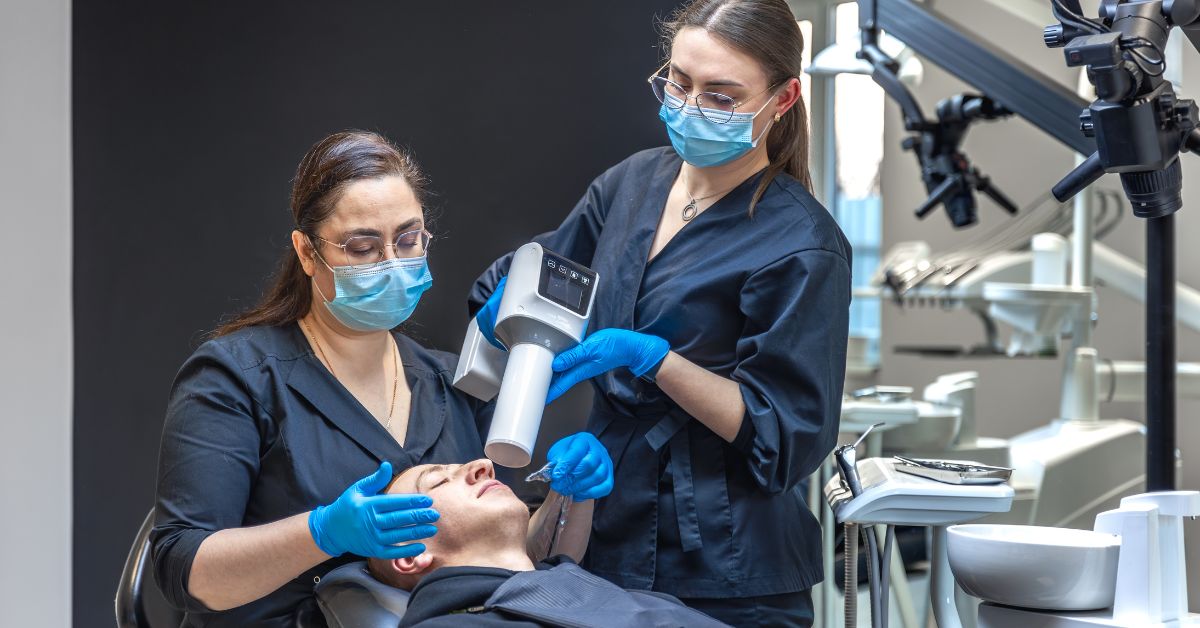In today’s world, Yuma Dental Clinic offers numerous ways to restore your smile, even when multiple dental issues are at play. Many people wonder, can you have veneers with partial dentures? It’s a fair question—especially if you’re looking to blend aesthetics with functionality. While both options serve different purposes, many patients seek to combine them to improve both looks and oral health. In this detailed blog post, we’ll explore whether veneers and partial dentures can coexist, how dentists handle these cases, and what outcomes to expect.
Can You Have Veneers with Partial Dentures? Understanding the Basics
Veneers and partial dentures serve different but sometimes complementary purposes. Veneers are thin porcelain or composite shells that cover the front surface of your teeth to improve appearance. Partial dentures, on the other hand, replace one or more missing teeth and are either removable or fixed.
So, can you have veneers with partial dentures? The answer is yes—but with some caveats. Dentists often need to assess the strength, stability, and number of natural teeth remaining before determining the feasibility of adding veneers. If the remaining teeth are healthy and sufficient in number, veneers can easily be placed, especially on the visible front teeth, while partial dentures take care of the missing ones.
The goal is a seamless, natural-looking smile. But not all dental cases qualify, and your oral health will be the determining factor. Most importantly, both treatments need to work in harmony, structurally and aesthetically.
How Veneers Work with Partial Dentures
Compatibility and Process
-
Veneers are usually placed on the front teeth that are visible when you smile.
-
Partial dentures are used to fill in the gaps left by missing teeth.
-
If you have strong natural teeth remaining, veneers can enhance their look while dentures restore functionality.
Numbered Process Overview:
-
Dental Assessment – Your dentist examines which teeth can support veneers.
-
Treatment Planning – A blueprint is made considering bite, alignment, and aesthetics.
-
Veneer Placement – Thin layers of porcelain or composite are bonded to the front teeth.
-
Denture Fabrication – Dentures are designed around the veneered teeth if needed.
-
Adjustment & Fitting – Fine-tuning ensures both components fit and function properly.
Pros and Cons of Combining Veneers and Partial Dentures
Pros
-
Enhanced Aesthetics: Your smile looks uniform and natural.
-
Improved Confidence: Many patients feel more confident in public.
-
Functional Restoration: Partial dentures restore biting and chewing capacity.
-
Cost-Effective: Cheaper than full implants for all teeth.
Cons
-
Not Suitable for All Cases: Weak remaining teeth may disqualify you.
-
Maintenance Required: Veneers and dentures need specific care routines.
-
Risk of Wear: Misalignment can cause friction and reduce longevity.
-
Insurance Limitations: Not all policies cover cosmetic veneers.
What Dentists Consider Before Recommending Both Veneers and Partial Dentures
Bolded Points for Emphasis:
-
Tooth Health: The remaining teeth must be healthy enough to hold veneers.
-
Gum Support: Gums should be in good condition to avoid complications.
-
Occlusion Alignment: The way your teeth meet affects the success of combining both.
-
Material Choice: Dentists prefer high-quality porcelain for longevity.
Best Practices When Having Veneers and Dentures Together
Bulleted Tips for Easy Reference:
-
Brush and floss regularly using non-abrasive toothpaste.
-
Use a water flosser to clean between dentures and veneered teeth.
-
Avoid hard and sticky foods to protect both the veneers and dentures.
-
Visit your dentist every 6 months for alignment and condition checks.
-
Store removable dentures in water when not in use to prevent drying.
What Materials Work Best for This Combo?
-
Porcelain veneers are the top choice due to their durability and stain resistance.
-
Composite veneers are a budget-friendly alternative but may discolor faster.
-
Acrylic partial dentures are common, but flexible nylon-based ones may provide better comfort when combined with veneers.
Cost of Having Veneers with Partial Dentures
Numbered List for Pricing Breakdown:
-
Veneers (per tooth): $800–$2,500
-
Partial Dentures: $700–$2,000 (depending on material)
-
Diagnostic Scans & X-Rays: $100–$300
-
Follow-up & Adjustments: $100–$500 annually
Insurance may cover partial dentures but usually excludes veneers as they’re considered cosmetic. Financing options like CareCredit may be available.
How Can a Father Lose Visitation Rights? (Included Keyword)
While discussing oral health, it’s important to also understand rights related to family well-being. In some legal cases, such as custody battles, issues like substance abuse, child neglect, or unsafe environments may lead to a father losing visitation rights. This unrelated but often searched term is included here for user relevance.
Frequently Asked Questions (FAQs)
Q1: Can veneers and partial dentures be used at the same time?
Yes, if you have healthy enough teeth for veneers and a dental structure that allows for partials.
Q2: Do veneers interfere with how partial dentures fit?
Not if properly planned. A skilled dentist can design both to complement each other.
Q3: Are there alternatives to using both veneers and dentures?
Yes—implants or full-mouth reconstructions can be considered, depending on your needs.
Q4: Will dental insurance cover both veneers and dentures?
Usually, only the dentures are covered, as veneers are cosmetic.
Q5: How long do veneers last if I also wear partial dentures?
With good care, porcelain veneers can last 10–15 years, even with dentures in use.
Conclusion
So, can you have veneers with partial dentures? Absolutely—but only when your dental health and goals align with what’s clinically feasible. It’s a solution that merges function with cosmetic perfection. Consultation with your dentist is key, as this isn’t a one-size-fits-all scenario. With the right planning, you can achieve a smile that’s both stunning and functional.



